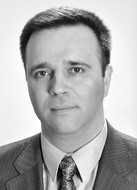Thermal water training model benefits for students’ health
Фотографии:
ˑ:
Dr.Hab., Professor V.L. Kondakov1
PhD, Associate Professor Е.N. Kopeikina1
V.V. Agoshkov1
PhD V.I. Bocharova1
1Belgorod State National Research University, Belgorod
Objective of the study was to provide theoretical and experimental grounds for the thermal water training model viewed as the promising physical cultural and health technology (PCHT). Subject to the study was a sample of the university male (n=36) and female (n=36) students engaged in the thermal water training model including: health swimming; contrasting shower; and sauna with cold dousing. The thermal water training model was found beneficial as verified by the BelSU students’ progress in the key health test rates and general somatic health test rates (generated by the G.L. Apanasenko Tests). Presently in the national academic physical education system a top priority is being given to the students’ somatic health improvement and physical activation initiatives; due motivations for systemic (including self-reliant) physical practices; and theoretical grounds for the most efficient physical activation models of highest demand in the student communities. The proposed physical education and health technology may be considered a promising educational tool as verified by its multisided positive effects on the students’ health.
Keywords: thermal water training, water procedures, bath procedures, thermoregulation, fitness and health technology.
References
- Vilensky M.Ya., Minaev B.N. Zakonomernosti izmeneniy professionalnoy rabotosposobnosti studentov v usloviyakh optimizatsii rezhima truda, byta, otdykha i dvigatelnoy aktivnosti [Change patterns in students' professional performance under optimization of regimen of work, life, leisure and motor activity]. Teoriya i praktika fiz. kultury. Moscow, 1976, no. 7. pp. 53-57.
- Drogomeretsky V.V., Kopeikina E.N., Kondakov V.L., Ermakov S.S. Adaptatsiya proby Rufye dlya otsenki rabotosposobnosti serdtsa studentov s otkloneniyami v sostoyanii zdorovya [Adaptation of Ruffier test for estimate cardiac function in students with disabilities]. Pedagogika, psikhologiya i mediko-biologicheskie problemyi fizicheskogo vospitaniya i sporta, 2017, no. 1, pp. 4-10. doi:10.15561/18189172.2017.0101
- Kondakov V.L., Kopeikina E.N., Balysheva N.V. Fizkulturno-ozdorovitelnaya tekhnologiya profilaktiki narusheniy v sostoyanii dykhatelnoy sistemy [Health and fitness technology to prevent respiratory disorders]. Teoriya i praktika fiz. kultury, Moscow, 2016, no. 1, pp. 34-36.
- Korobkov A.V., Golovin V.A., Maslyakov V.A. Fizicheskoe vospitanie [Physical education]. Moscow: Vysshaya shkola publ., 1983, 278 p.
- Shaguch A.A. Kompleksnoe ispolzovanie fizicheskikh uprazhneniy i sredstv zakalivaniya na zanyatiyakh fizicheskim vospitaniem v vuze. Dis. kand. ped. nauk [Complex use of physical exercises and hardening techniques in academic physical education. PhD dis.]. Maikop, 1997, 118 p.
- Kondakov V.L., Voloshina L.N., Kopeikina E.N., Balysheva N.V., Nikulina D.E. Physical and recreational preventing measure technology of disturbances in the cordial and vascular system of students. International journal of advanced biotechnology and research, 2018, 9(1): 990-996. Available at: https://drive.google.com/file/d/1Chh7YJFGp1zoQ9lxcoowAIZ1qViw9l0a/view
- Kondakov V.L., Kopeikina E.N., Usatov A.N. On purposefulness of application of physical culture health related technology for prophylaxis of students’ respiratory system disorders. Physical education of students, 2016; 2:4–12. doi: 10.15561/20755279.2016.0201 Available at: http://www.sportedu.org.ua/index.php/PES/article/view/51/38



 Журнал "THEORY AND PRACTICE
Журнал "THEORY AND PRACTICE